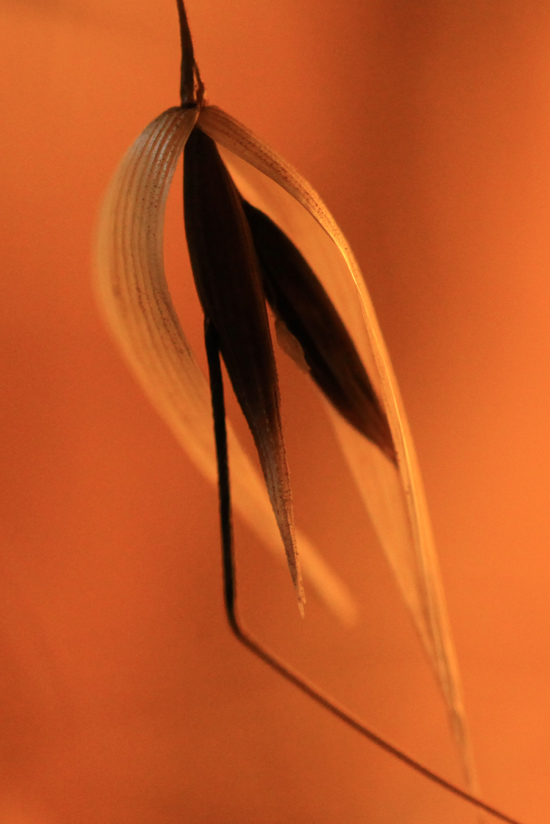Before modern genetics and breeding, before the world’s great stores of genetic resources were built and before the purity of crop varieties could be certified using DNA tests, most crops were kept as landraces.
Seed of wheat, oat, barley, beans and all the other crops was usually highly variable, the individuals genetically different. When sown in a field in a year, those individuals that survived and yielded the most were those best fitted to the conditions. These fitter plants contributed more to the harvested seed than their less fit neighbours. Samples of seed were kept and then sown the next season. Again, plants that were most fitted survived and reproduced.
Gradually the nature of the seed changed by this repeated selection to track the local environment and growing conditions. This would have happened as the early cereals, legumes, fibres and oils were carried westwards and northwards from their Asian centres of origin to the margins of the Atlantic. Landraces evolved to cope with low soil fertility, a cold wet winter and the local pests, and would have split into recognisable types, known to belong to an area of land or method of farming.
But with little warning, a crop could be wiped out by extreme events, the farmers left with just a fragment, or none, of the seed they had nurtured for years, decades even. Maintaining a landrace was no easy matter. Many would have disappeared, others changed to adapt to new conditions.
Landraces are not a thing of the past. They are common in Africa and large parts of Asia today. Under-used and under-researched crops such as bambara Vigna subterranea exist mostly as landraces, each typical of a region and maintained by seed saved from one year to the next.
Not so long ago in our Islands, crops were maintained as landraces, and the practice persists (see below), though most crops are now sown from bags of named varieties, each bought from a seed supplier, certified and uniform and generally high yielding.
More on this web site: Landrace 1 – bere
The Lawson list of 1852
The Synopsis of Vegetable Products of Scotland, prepared by the Edinburgh seedsmen Peter Lawson and Son in 1852 consists largely of named ‘types’ of cereals, legumes, fibres, fruit and all the other crops, but the types are not what would be considered true varieties today. Among the wheats, there were 142 types recorded, the barleys 42 and the oats 53 – each named with usually some note on their origin.
Some of the types on the list were recently imported, for instance, from the Baltic, from France, from the low countries, from England. But many of the notes suggest types were found and maintained by individual farmers in specific regions.
So there is the Hopetoun wheat “the produce of single ear of an unusual size … discovered in 1832, on Mr Reid’s farm of Drem, East Lothian … [which was passed through several farming hands and] … is now pretty widely distributed amongst growers ….”.
Or the St Madoes barley “discovered, in 1838, by the Rev. Mr. Noble of St Madoes, in a field of the Dunlop [another type of barley]; and is evidently of a very different kind … a recommendation in damp climates …” .
And then Dyock’s Early oat ” originally raised by a Mr Dyock, near Aberdeen, and has been grown in the vicinity of Brechin …. it is hardy, early, very prolific, and exceedingly well adapted for the higher corn lands”.
Most of those old cereal types are no longer with us, lost in the march towards modern varietal uniformity, but what the Lawson list shows clearly is the vigour and intent of farmers working 100-200 years ago in their search for better crop seed, better for their region and purposes, better adapted to their conditions; and then the bulking and trialling of a new type over a few seasons, and the passing on of the good material to others.
Are there landraces still?
A few farmers save seed – it avoids buying it every year. (Possibly many more save it than would admit!) Yet not many landraces remain here – the traditional barley, bere, was recorded in the Lawson list as a four-row type, “chiefly grown in the Highlands of Scotland and in the lowlands on exposed inferior light soils”. Bere remains with us in a few places, notably Orkney.
There are also landraces of wheat and rye in certain collections and black oat must still persist mainly as a landrace.
The Living Field grows bere, and landraces of wheat, rye and black oat every year to compare them with modern varieties. We save seed at the end of the year, keep it safe over the winter and sow it as a new crop next spring. All four types germinate well and grow fast. They are different from their modern relatives, often taller, rangier, weedier.
Articles on the cereal landraces will appear on the Living Field web site in the coming weeks.
References
Lawson P and Son. 1982. Synopsis of the Vegetable Products of Scotland. Edinburgh: private press of Peter Lawson and Son.
Author/contact: geoff.squire@hutton.ac.uk

